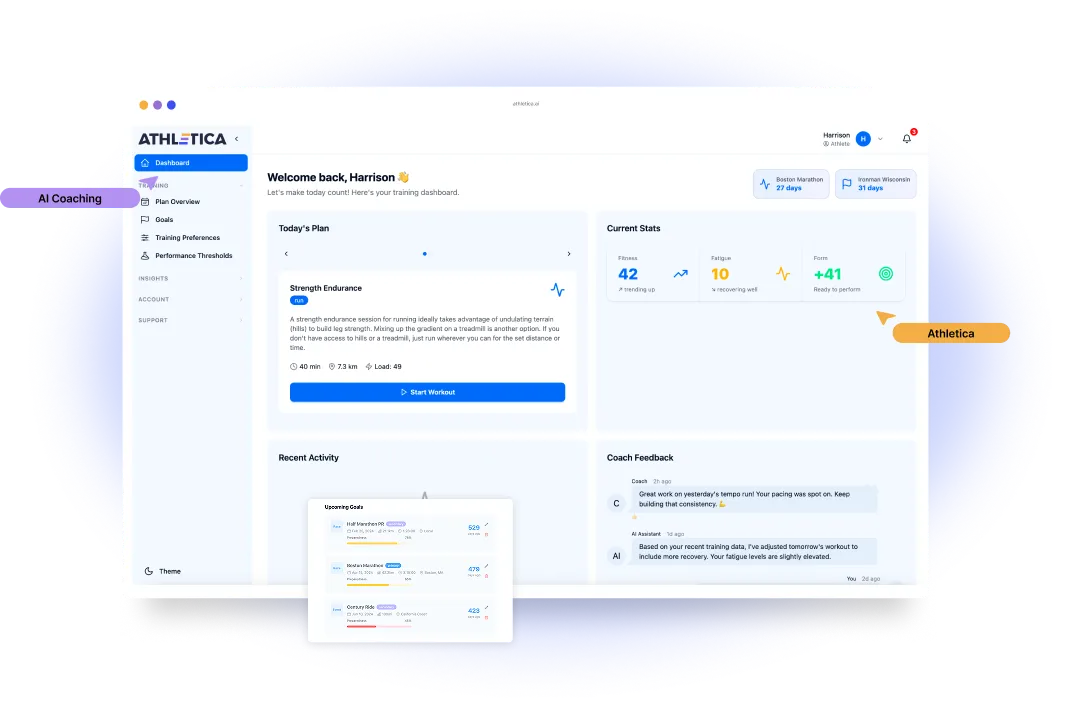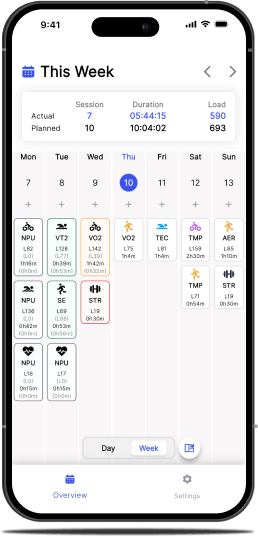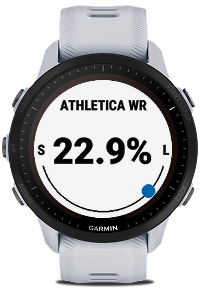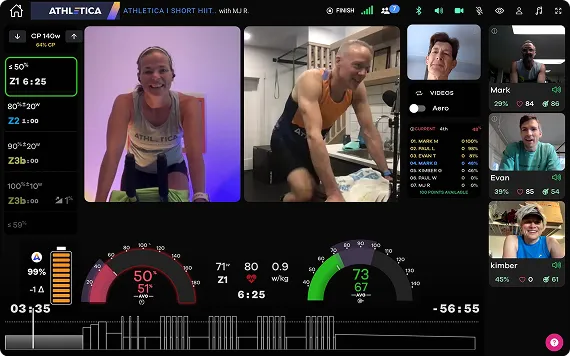Science-backed, used by Olympians, Athletica-powered AI.
Personalized for you.




















Connect your wearable and get workouts built for your fitness and recovery. Athletica adapts to your physiology, real-world data, and feedback — syncing directly with your devices to make every day smarter.




Whether you're doing your first Ironman, first Gran Fondo, running your first 5K, or just want to stay active, Athletica gives you structure, flexibility, and results — powered by smart AI coaching.
Train on your terms, without guilt
Athletica adapts to your life so you stay consistent, not overwhelmed.
Backed by data, proven by results
Train like Olympians with cutting-edge, evidence-based coaching
Never miss progress
Athletica adapts in real time — one busy day won’t derail your week.
Coaching your way
AI Coach only, or combine it with your coach — you stay in control
Train anywhere, anytime!
No matter where you are, Athletica delivers sessions for your reality.
Feel progress, not just the burn
Instant insights help you recover faster and avoid burnout.
From your First 5k to Ironman Win — We’ve Got You Covered
Running
5km - Ultra
Triathlon
Sprint - Long Distance
Cycling
MTB, cyclocross, road cycling
Duathlon
Road or trail, no worries
Hyrox
First Timers - Elites
Rowing
Indoors or on-water


With Athletica, coaches spend less time buried in planning and more time doing what matters—coaching. Pair it with Velocity, and those moments come alive.
Workout live with real coaches, train with friends, or hit sessions on demand. Athletica keeps you motivated and on track—anytime, anywhere.
Spend less time planning and more time coaching. Athletica takes care of the details so you can focus on your athletes and their results.